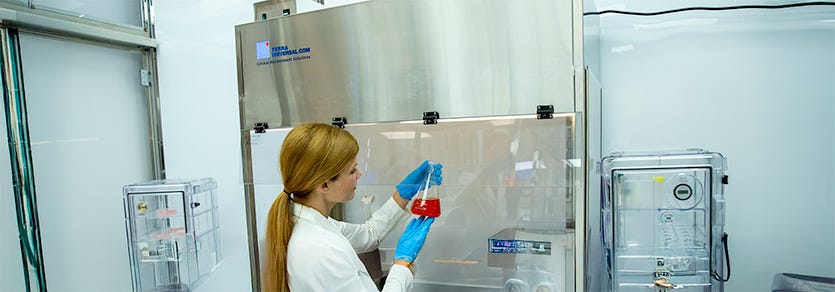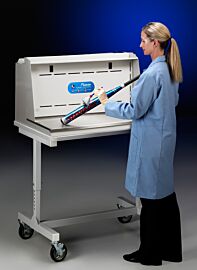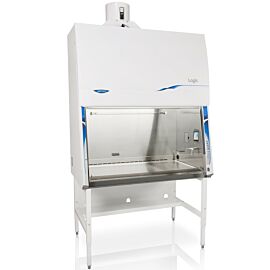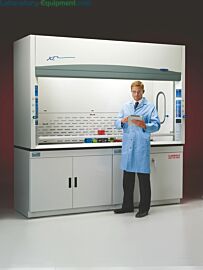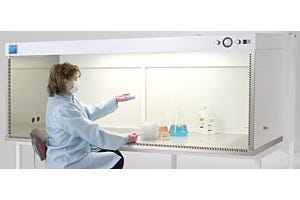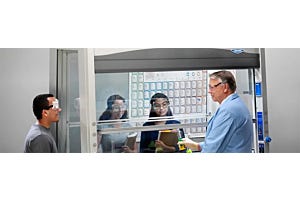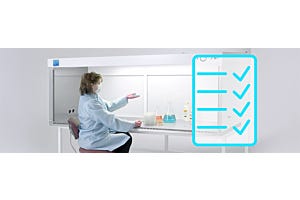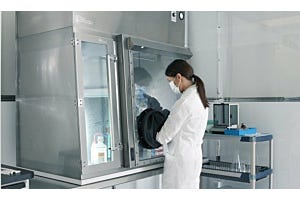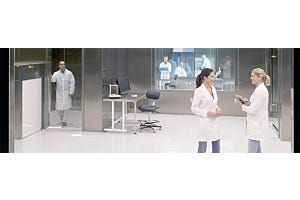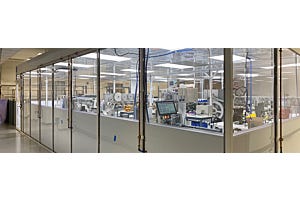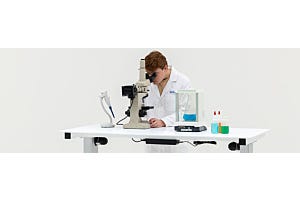Whether you’re using a laboratory hood to limit exposure to chemical fumes or you require a particle-free work environment, all components of your hood work in tandem to attain optimal functionality. Hoods are enclosures, sometimes called work benches, work stations, or cabinets, that either blow filtered air down onto the work surface (positive pressure) or exhaust filtered air to the outside (negative pressure), based on the nature of the application. Below is a guide to understanding the different components of your cleanroom hood.
The sash or shield, located on the face of your hood, is a transparent panel that shields internal samples from contamination while providing some protection to the outside environment. For personnel to reach inside the hood and perform work, the sash is raised. When the sash is completely closed, UV sterilization can be accomplished safely. Since opening the sash will introduce some air turbulence (and, therefore, contaminants), it’s best to leave the panel shut when not in use.
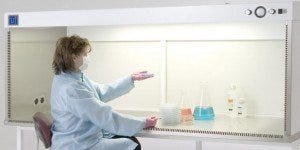
Horizontal laminar flow hood with airfoils along front and sides.
Airfoil
An airfoil is a vent that allows room air to enter the hood chamber, preventing vapors from escaping. While most of these openings are typically positioned along the bottom front of the hood, some air foils are arranged on either side of the sash opening for additional airflow. The airfoil also helps prevent turbulent eddies from creating air imbalances in the work space.
Baffle
The baffle—an adjustable, sectional partition—influences air force and direction within the work station. In some hoods, baffles are located under the ceiling, directly above the work surface. Many FFUs (fan/filter units) are also assembled with internal baffles to help with air uniformity. These baffles work in combination to ensure laminarity inside positive-pressure hoods. Perforated exhaust-baffle plates at the rear of the hood can be positioned to control pressure by restricting (or increasing) the amount of airflow exiting the hood.
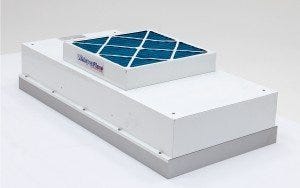
Fan Filter Unit for HEPA or ULPA filtration.
Fan/Filter Unit
An FFU is an essential part of the hood. Of all the hood components, it is the one primarily responsible for the hood’s clean environment, creating the correct number of air-changes-per-hour, and filtering out particles and/or fumes and vapors. HEPA and ULPA filters, supported by pre-filters, are used with positive and negative pressure hoods to remove micro-particles. Activated charcoal filters are typically used with negative-pressure ductless exhaust fume hoods to remove solvent fumes and organic compounds or vapors.
Plenum
A plenum is the space behind walls or under the work surface used for balancing and distributing air. In a laminar flow hood, air enters the plenum from the airfoils, and is pushed to the filter at the top or back of the hood before entering the clean work space. Plenums in exhaust hoods help direct contaminated air away from the work area.
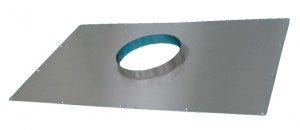
Flange adapter panel for ducting.
Duct
Hoods used to remove unpleasant or harmful fumes require air to be directed outside the work area. In order to transport the air, exhaust passages known as ducts channel the contaminated air out of the clean environment. This ducting may lead directly to the outside environment (room), or merge with the facility’s existing duct system that leads outside of the building.
Gauges/Meters
One or several gauges can be attached to the hood, depending upon the application. An occupancy sensor improves energy-efficiency by automatically reducing airflow when the hood is not in operation. Air pressure must be checked to ensure filter functionality and the correct atmospheric condition for your application. Gauges also monitor air velocity and particle count.
Work Area
This is the main space where processes are completed within the hood. Depending on your hood configuration, the working area is either centered under (vertical flow hood), or in front of (horizontal flow hood) the particle or fume filter. The surface and air immediately above it is the most ideal area to work and store sensitive materials, as it is the cleanest location in the hood. Work surface options include solid stainless steel to prevent damage from chemicals, or perforated designs that optimize laminar air flow.
Selecting a proper hood design means first understanding the purpose of each component and their inter-dependencies. Some product choices are dictated by your application, but others are based on your preferences and budget. Click here for more information on Terra’s hood designs.



